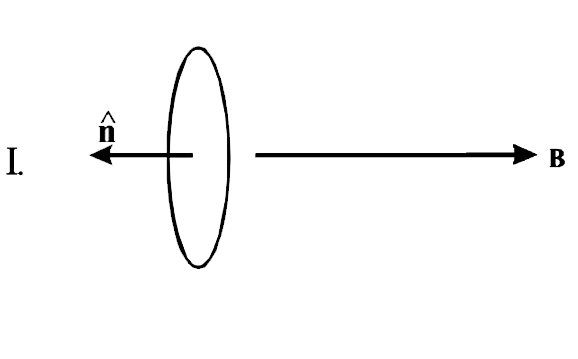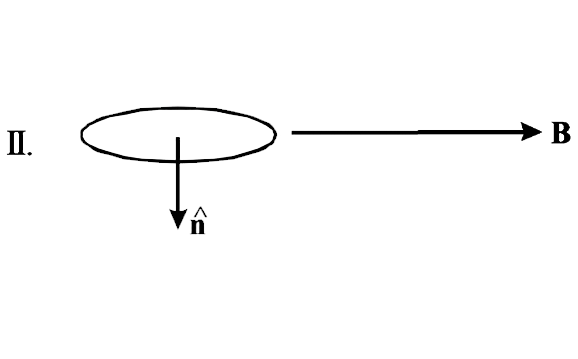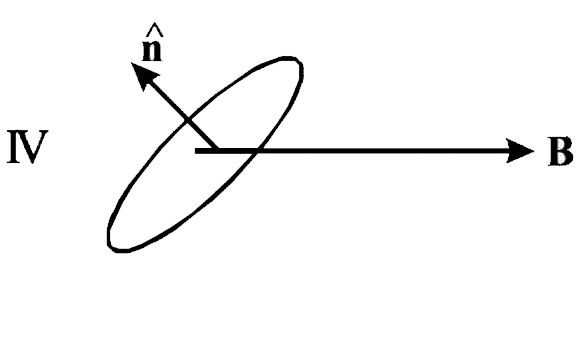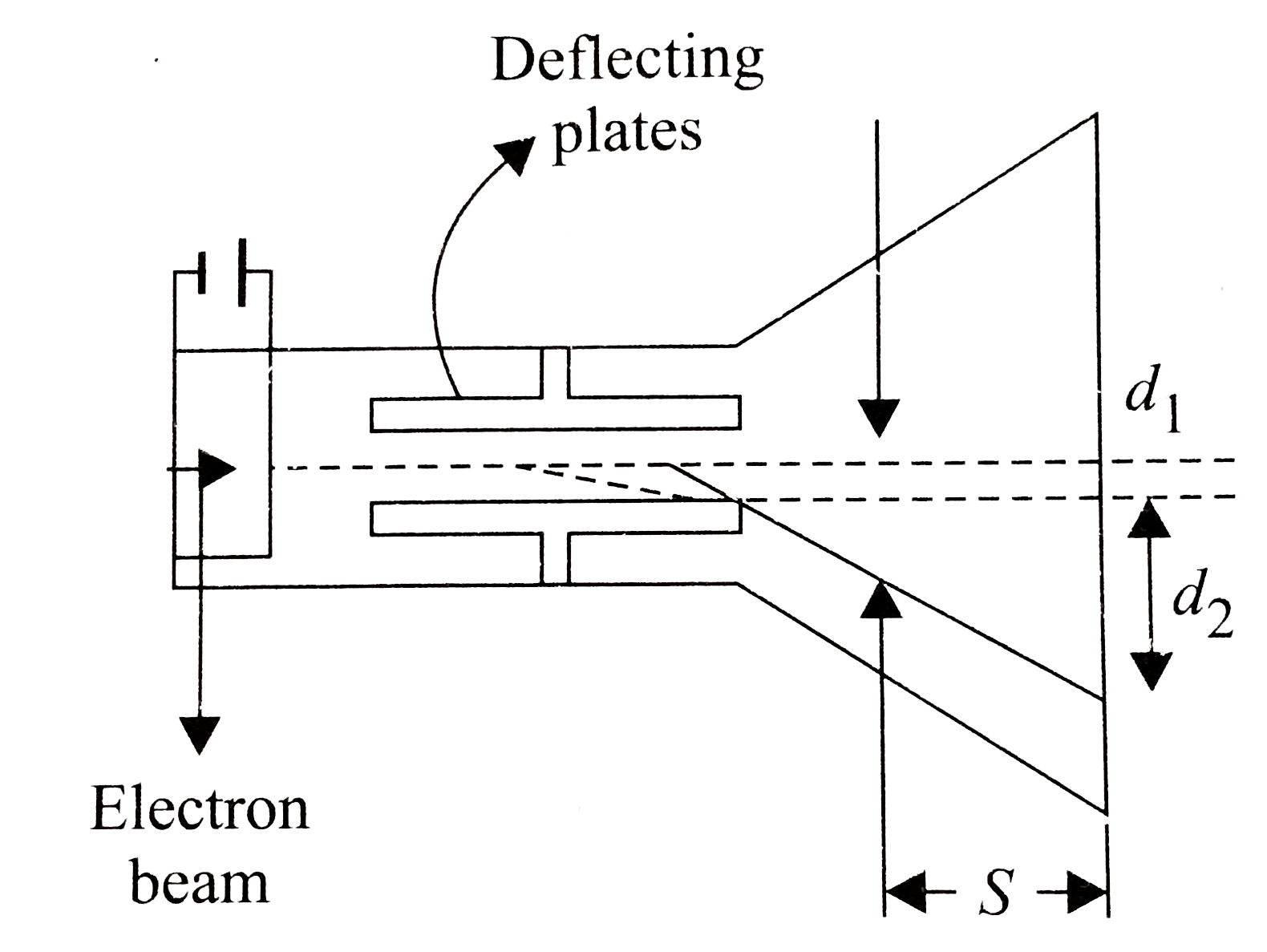At a specific instant emission of radioactive compound is deflected in a magnetic field . The compound can emit
(i) electron (ii)protons(iii)(iv) neutrons
The emission at instant can be
The correct Answer is:A
To solve the question about which emissions from a radioactive compound can be deflected in a magnetic field, we will analyze the options provided based on their charge properties.
1. Understanding the Problem: We need to determine which of the emissions (electron, proton, helium nucleus, or neutron) can be deflected in a magnetic field.
2. Identifying Charged Particles:
- Electrons are negatively charged particles (charge = -e).
- Protons are positively charged particles (charge = +e).
- Helium nuclei (He²⁺) are positively charged particles (charge = +2e).
- Neutrons are neutral particles (charge = 0).
3. Magnetic Force on Charged Particles: The magnetic force acting on a charged particle moving in a magnetic field is given by the equation:
F=Q(v×B)
where Q is the charge of the particle, v is the velocity, and B is the magnetic field. Only charged particles will experience a magnetic force and thus can be deflected.
4. Analyzing Each Option:
- Electrons: Since they have a charge (-e), they will be deflected in a magnetic field.
- Protons: They have a charge (+e), so they will also be deflected.
- Helium Nucleus (He²⁺): With a charge of +2e, it will be deflected as well.
- Neutrons: Being neutral (charge = 0), they will not experience any magnetic force and therefore will not be deflected.
5. Conclusion: The particles that can be deflected in a magnetic field are electrons, protons, and helium nuclei. Neutrons cannot be deflected.
Final Answer:
The emission at the instant can be electrons, protons, or helium nuclei. Therefore, the correct options are (i) electrons, (ii) protons, and (iii) helium nuclei.
- Electrons are negatively charged particles (charge = -e).
- Protons are positively charged particles (charge = +e).
- Helium nuclei (He²⁺) are positively charged particles (charge = +2e).
- Neutrons are neutral particles (charge = 0).
F=Q(v×B)
where Q is the charge of the particle, v is the velocity, and B is the magnetic field. Only charged particles will experience a magnetic force and thus can be deflected.
- Electrons: Since they have a charge (-e), they will be deflected in a magnetic field.
- Protons: They have a charge (+e), so they will also be deflected.
- Helium Nucleus (He²⁺): With a charge of +2e, it will be deflected as well.
- Neutrons: Being neutral (charge = 0), they will not experience any magnetic force and therefore will not be deflected.
The emission at the instant can be electrons, protons, or helium nuclei. Therefore, the correct options are (i) electrons, (ii) protons, and (iii) helium nuclei.
Topper's Solved these Questions
- BOOK - ALLENCHAPTER - SIMPLE HARMONIC MOTIONEXERCISE - Exercise-05 [A]39videos
SIMPLE HARMONIC MOTION
- BOOK - ALLENCHAPTER - SIMPLE HARMONIC MOTIONEXERCISE - Exercise-05 [B]12videos
SIMPLE HARMONIC MOTION
- BOOK - ALLENCHAPTER - SIMPLE HARMONIC MOTIONEXERCISE - Exercise-04 [A]20videos
SIMPLE HARMONIC MOTION
- BOOK - ALLENCHAPTER - RACEEXERCISE - Basic Maths (Wave Motion & Dopplers Effect) (Stationary waves & doppler effect, beats)24videos
RACE
- BOOK - ALLENCHAPTER - TEST PAPEREXERCISE - PHYSICS4videos
TEST PAPER
Similar Questions
Knowledge Check
- Question 1 - Select One
A current carrying loop is placed in a uniform magnetic field in four different orientations , I,ii,iii & iv arrange them in the decreasing order of potential Energy



 A4,2,3,1B1,4,2,3C4,3,2,1D1,2,3,4
A4,2,3,1B1,4,2,3C4,3,2,1D1,2,3,4
On adding AgNO3 to the Lassaigne solution of a compound, which colour will be obtained if the compound contains
(i) CI (ii) Br (iii) (iv) N (v) S?View SolutionHow many electron protons and neutrons in a nucleus of atomic number 11 and mass 24?
(i) number of electron = (ii)number of proton = (iii)number of neutrons =View SolutionWhat is the effect on neutron to proton ratio in a nucleus when (i) an electron, (ii) a positron is emitted?
View SolutionIndentify the unsaturated compounds from the following.
(i) Propane
(ii) Propene
(iii) Propyne
(iv) ChloropropaneView SolutionHow many electrons are unpaired in
(i) He ? (ii) C?
(iii) N? (iv) K?View SolutionFollowing experiment was performed by J.J. Thomson in order to measure ratio of charge e and mass m of electron.

Electrons emitted from a hot filament are accelerated by a potential difference V. As the electrons pass through deflecting plates, they encounter both electric and magnetic fields. the entire region in which electrons leave the plates they enters a field free region that extends to fluorescent screen. The entire region in which electrons travel is evacuated.
Firstly, electric and magnetic fields were made zero and position of undeflected electron beam on the screen was noted. The electric field was turned on and resulting deflection was noted. Deflection is given by d1=eEL22mV2 where L = length of deflecting plate and v = speed of electron.
In second part of experiment, magnetic field was adjusted so as to exactly cancel the electric force leaving the electron beam undeflected. This gives eE = evB. Using expression for d1 we can find out em=2d1EB2L2
If the electron is deflected downward when only electric field is turned on, in what direction do the electric and magnetic fields point in second part of experimentView SolutionGive the structures of the following aromatic compounds:
(i) p-Toluidine (ii) p-cresol
(iii) T.N.T. (iv) Benzophenone.View Solution

